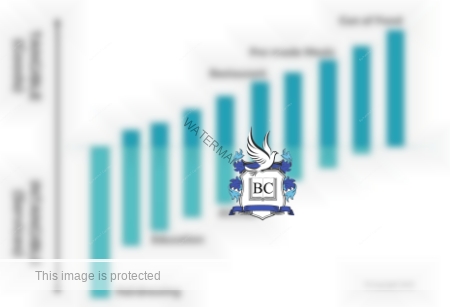1. Key Concepts in Marketing
Mobile View
The mobile phone view is good for revision but for the best learning experience we recommend larger screens.
CONTENTS
By the end of this lesson you can apply these concepts to your business of interest.
- 1.1 Organisational Orientations.
- 1.2 What is Marketing.
- 1.3 Marketing Fields.
- 1.4 Needs, Wants & Demand.
- 1.5 Goods & Services.
- 1.6 The Product Life-Cycle.
- 1.7 The Marketing Mix.
01
KEY
CONCEPTS
02
DEVELOPING PRODUCTS
03
MARKET
ANALYSIS
04
SUPPLY CHAIN MANAGEMENT
05
PRICING
STRATEGIES
06
SALES
MANAGEMENT
1.1 ORGANISATIONAL ORIENTATIONS
WORKBOOK
Page 5 (Exercise 1a)
4 concpets Guide How Most Organisations Operate.
Selling
Concept
Product
Concept
Production
Concept
Market
Concept
Organisations must consider each of the four concepts listed above. However, their ORIENTATION is the concept that guides their overall business strategy.
While we will teach you about all of these concepts in the coming subjects, in this lesson we’ll be focusing on the market orientation. The market orientation focuses on the customer by first understanding their consumers’ needs, then delivering great value to drive satisfaction and develop long-term customer relationships.
Organisations must consider each of the four concepts listed above. However, their ORIENTATION is the concept that guides their overall business strategy.
While we will teach you about all of these concepts in the coming subjects, in this lesson we’ll be focusing on the market orientation.
The market orientation focuses on the customer by first understanding their consumers’ needs, then delivering great value to drive satisfaction and develop long-term customer relationships.
SELLING ORIENTATION
Here companies focus on promotions and selling to drive growth. This is especially common for companies with strong competition, and constantly changing products (e.g. used car market).
Firms with an oversupply of products sell as much as possible, with less thought to market demand and consumer’s specific needs: they will sell whatever they have as effectively as they can.
EXAMPLES: Used Car Dealers, Fast Fashion
PRODUCT ORIENTATION
Here the focus is on producing the highest quality product to drive sales. Creating awesome products is important (as we will see in the next subject), but focusing exclusively on the product, and not consumer wants & demand may be risky at times.
While iPhone were market leaders for many years, a focus on product innovation, and not consumer needs, saw Apple lose market share to Samsung who offered similar benefits but cheaper. Apple eventually introduced cheaper models to meet demand, and slow the growth of Samsung.
EXAMPLES: Apple, Louis Vuitton
PRODUCTION ORIENTATION
Here, companies want to produce and distribute their products faster and more efficiently than anyone else. This enables the company to develop economies of scale.
This is a useful when consumers just want the product benefits, and are less interested in specific product attributes.
EXAMPLES: Computer Chips, McDonalds, Milk & Sugar
MARKETING ORIENTATION
With the marketing orientation we focus on what customers need and want.
While the other concepts start with manufacturing or the product, and selling what we have, the marketing concept starts with consumer’s needs and wants, and then focuses all business activities on delivering products that provide superior value and satisfaction.
EXAMPLES: Amazon, Premium Airlines, Beaumont College
- BENEFITS OF THE MARKETING ORIENTATION
- Increase responsiveness to changing market conditions
- Guide innovation to meet customer needs & demand
- Protect against new & strong competitors
- Develop efficient operations & reduce waste
- Reduce the risk of lost sales & bad reviews / publicity
- Drive satisfaction, loyalty & repeat purchases
- Read how Amazon used the marketing orientation

SELLING ORIENTATION
FOCUS ON SELLING & PROMOTIONS TO DRIVE SALES
Common for companies with lots of competition and changing products (e.g. used car dealers). Companies with an oversupply of products sell as much as possible, with less thought to consumer’s needs: they sell whatever they have as effectively as they can.
EXAMPLES: Used Car Dealers, Fast Fashion

PRODUCT ORIENTATION
FOCUS ON PRODUCING THE HIGHEST QUALITY PRODUCT
Creating awesome products is important (as we will see in the next subject), but only focusing on the product, and not what consumers wants and demand may be risky.
iPhone were market leaders for many years, but a focus on product innovation, and not consumer needs, saw Apple lose sales to Samsung who offered similar benefits but cheaper. Apple eventually introduced cheaper models to slow the growth of Samsung.
EXAMPLES: Apple, Louis Vuitton
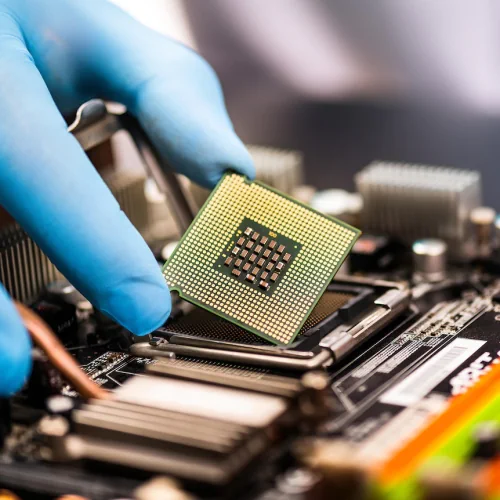
PRODUCTION ORIENTATION
FOCUS ON EFFICIENT PRODUCTION & DISTRIBUTION
Here, companies want to produce and distribute their products faster and more efficiently than anyone else. This enables the company to develop economies of scale. This is a useful when consumers just want the product benefits, and are less interested in specific product attributes.
EXAMPLES: Computer Chips, McDonalds, Milk & Sugar
IKEA built their company on this orientation with “flat pack” furniture for fast and cost effective distribution. Now that they’re a leader in efficient distribution their focus has moved to a marketing orientation.
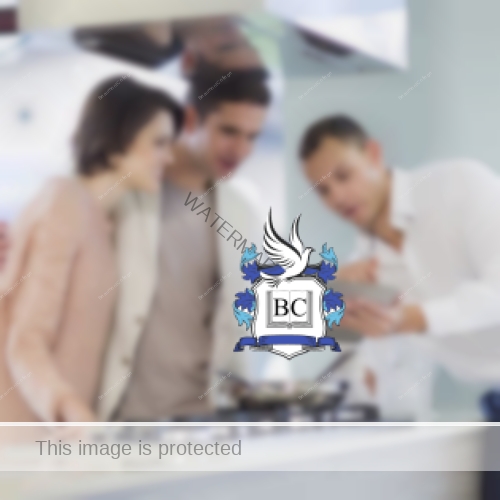
MARKET ORIENTATION
FOCUS ON CONSUMER NEEDS, WANTS & DEMAND
While the other orientations start with the product and selling, the market orientation starts with consumer’s needs and wants, and then focuses on delivering products that provide superior value and satisfaction. The marketing orientation helps companies with :
- Satisfaction, loyalty & repeat sales
- Product innovation & development
- Protection against competitors
- Changing market conditions
- Efficiency & waste reduction
- Lost sales & bad reviews

SELLING ORIENTATION
FOCUS ON SELLING & PROMOTIONS TO DRIVE SALES
Common for companies with lots of competition and changing products (e.g. used car dealers). Companies with an oversupply of products sell as much as possible, with less thought to consumer’s needs: they sell whatever they have as effectively as they can.
EXAMPLES: Used Car Dealers, Fast Fashion

PRODUCT ORIENTATION
FOCUS ON PRODUCING THE HIGHEST QUALITY PRODUCT
Creating awesome products is important (as we will see in the next subject), but only focusing on the product, and not what consumers wants and demand may be risky.
iPhone were market leaders for many years, but a focus on product innovation, and not consumer needs, saw Apple lose sales to Samsung who offered similar benefits but cheaper. Apple eventually introduced cheaper models to slow the growth of Samsung.
EXAMPLES: Apple, Louis Vuitton

PRODUCTION ORIENTATION
FOCUS ON EFFICIENT PRODUCTION & DISTRIBUTION
Here, companies want to produce and distribute their products faster and more efficiently than anyone else. This enables the company to develop economies of scale. This is a useful when consumers just want the product benefits, and are less interested in specific product attributes.
EXAMPLES: Computer Chips, McDonalds, Milk & Sugar
IKEA built their company on this orientation with “flat pack” furniture for fast and cost effective distribution. Now that they’re a leader in efficient distribution their focus has moved to a marketing orientation.

MARKET ORIENTATION
FOCUS ON CONSUMER NEEDS, WANTS & DEMAND
While the other orientations start with the product and selling, the market orientation starts with consumer’s needs and wants, and then focuses on delivering products that provide superior value and satisfaction.
THE MARKETING ORIENTATION HELPS WITH
- Satisfaction, loyalty & repeat sales
- Product innovation & development
- Protection against competitors
- Changing market conditions
- Efficiency & waste reduction
- Lost sales & bad reviews
HOW ABOUT YOUR
COMPANY OF INTEREST?
For your company of interest
what kind of orientation do they have?
Do you think this is the best approach, or are there any benefits that could come from a different approach?
Rememeber
Our product, production, selling & marketing are all important. But our ORIENTATION is the concept that acts as our main focus that guides all our business decisions.
1.2 WHAT IS MARKETING?
WORKBOOK
Page 6 (Exercise 1b)
Marketing is about attracting & influencing customers, increasing sales, and developing lasting customer relationships.
To attract and influence customers we need to do research and understand consumer needs, wants and demand. We then design strategies to appeal to consumer preferences better than our competitors! This is something that every company must do to survive and grow. So how do we do this – let’s take a look at the 5 main areas (functions) of marketing.
MARKET RESEARCH
We also research our competitors and larger considerations such as political and legal factors that may affect our business (this sounds complicated but we’ll break down it down in lesson 3).
PRODUCT DEVELOPMENT
Once we understand all the important considerations from our research we develop our product ideas.
This includes things such as what product attributes and functionality we will include, how these will benefit the consumer, the product’s packaging and so forth. We will look at this in the next lesson.
ADVERTISING & PROMOTIONS
This is most commonly associated with marketing. Marketing and communications (MARCOMS) coordinate different media, events, advertising, partnerships, public relations, and much more.
Our strategies are coordinated under the banner of Integrated Marketing Communications (IMC). We look at IMC in MKTG1040 (Marketing Communications).
SALES & DISTRIBUTION
This covers our entire supply chain management from developing and producing our product through every stage to the consumer purchase.
You may sell locally, nationally, or internationally, or just sell your products online. Your distribution and sales channels impact who buys your products, when they buy them, and how they buy them. We look at distribution and selling in lessons 4 & 6.
CRM
CUSTOMER RELATIONSHIP MANAGEMENT (CRM)
It’s not enough to make a one-off sale (that’s the selling orientation). Good CRM builds long-term customer relationships and includes every stage of the customer journey from inquiries, purchase, and after sales follow up.
Good customer relationship management(CRM) manages all of this. We will look at CRM in lesson 6.

RESEARCH & ANALYSIS
We continually perform market research to investigate consumer interest, refine product ideas, determine pricing and a great deal more. We also research our competitors and larger considerations such as political and legal factors that may affect our business.
This sounds complicated but we'll break down it down in lesson 3.
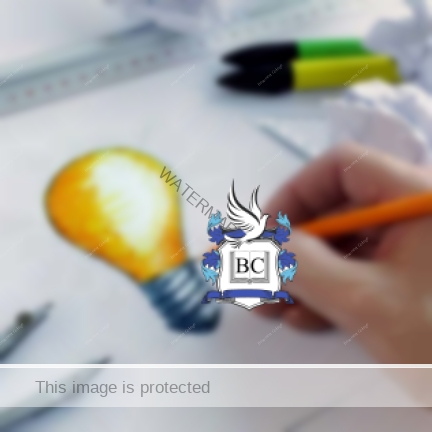
PRODUCT DEVELOPMENT & MANAGEMENT
Once we understand all the important considerations from our research we develop our product ideas. This includes things such as what product attributes and functionality we will include, how these will benefit the consumer, the product's packaging and so forth.
We will cover this in lesson 2 (next).

ADVERTISING & PROMOTIONS
This is most commonly associated with marketing. Marketing and communications (MARCOMS) coordinate different media, events, advertising, partnerships, public relations, and much more. Our strategies are coordinated under the banner of Integrated Marketing Communications (IMC).
Covered in MKTG1040 (Marketing Communications).

DISTRIBUTION & SELLING
This covers our entire supply chain management from developing and producing our product through every stage to the consumer purchase. You may sell locally, nationally, or internationally, or just sell your products online. Your distribution and sales channels impact who buys your products, when they buy them, and how they buy them.
Covered in lessons 4 & 6.

CUSTOMER RELATIONSHIP MANAGEMENT (CRM)
It's not enough to make a one-off sale (that's the selling orientation). Good CRM builds long-term customer relationships and includes every stage of the customer journey from inquiries, purchase, and after sales follow up. Good customer relationship management (CRM) manages all of this.
This is covered in lesson 6.
SEE HOW THESE 5 FUNCTIONS TIE INTO THE MARKET ORIENTATION BENEFITS
- Satisfaction, loyalty & repeat sales
- Product innovation & development
- Protection against competitors
- Changing market conditions
- Efficiency & waste reduction
- Lost sales & bad reviews
- NOTICE HOW THESE 5 FUNCTIONS ABOVE TIE INTO THE MARKETING ORIENTATION BENEFITS
- Responsiveness to changing markets
- Guide product innovation
- Protect against strong competitors
- Develop efficient operations
- Reduce lost sales & bad reviews
- Satisfaction, loyalty & repeat purchases
1.3 MARKETING FIELDS
ALL ORGANISATIONS NEED MARKETING. FROM governments AND global brands, down to small FAMILY businesses.
Marketing and business development encompass many roles focused on driving brand success. Marketing Managers oversee overall business strategies and campaigns. Within the marketing manager’s team are Research Analysts study trends and customer behavior. Content Strategists and Digital Marketers create and manage engaging content and marketing across platforms. Brand Managers ensure consistent brand identity and reputation. Product Managers handle product development and positioning. Let’s look at some key marketing terminology that applies to all these jobs.
Marketing and business development encompass many roles focused on driving brand success. Marketing Managers oversee overall business strategies and campaigns. Within the marketing manager’s team are Research Analysts study trends and customer behavior. Content Strategists and Digital Marketers create and manage engaging content and marketing across platforms. Brand Managers ensure consistent brand identity and reputation. Product Managers handle product development and positioning. Let’s look at some key marketing terminology that applies to all these jobs.
MARKETING FIELDS
Watch this brief summary of the main areas of marketing.
Watch this brief summary of the main areas of marketing. Your Beaumont courses will help prepare you for them all, as well as more senior management positions.
OUTBOUND MARKETING
TRADITIONAL MARKETING ACTIVITY
Outbound marketing, also called traditional marketing, is critical for all organisations, especially those with a physical presence (i.e. not just online businesses).
Outbound marketing includes out-of-home advertising, television, print, and radio advertising, trade expos, personal selling and so forth.
Our inbound marketing (next tab) supports our traditional marketing activity.
INBOUND MARKETING
Inbound marketing seeks out and informs relevant consumers about company and product information, rather than simply sending out mass marketing messages to the market (like outbound marketing). While online marketing is critical these days large organisations cannot rely just on these activities to be competitive.
2 MAIN TYPES OF ONLINE MARKETING:
SEARCH ENGINE MARKETING
Search engine marketing attracts visitors to company websites from online searches. Businesses advertise their website on search engines, like Google, and pay for each visitor to your site.
CONTENT MARKETING
Content marketing reaches people on blogs & social media who are not specifically looking for your brand (like search engine marketing). It's a cost effective way to boost offline marketing.
SOCIAL MARKETING
SOCIETAL MARKETING
With societal marketing the organization’s task is to meet the needs and wants of consumers, but in a way that enhances the well-being of society in general. Beaumont College is an example of this with their scholarship programs.
SOCIAL MARKETING
Social marketing strives to achieve social change in communities. It’s usually undertaken by governments and Not For Profit (NFT) organizations to bring about better conditions for society. Examples include quit smoking campaigns, healthily living, and looking after older generations.
BRANDING
BRAND MANAGEMENT
Brand management is a function of marketing that uses techniques to increase the perceived value of a product line or brand over time.
Effective brand management enables the price of products to go up (because we’re adding customer value) and builds loyal customers through positive brand associations and images or a strong awareness of the brand.

Outbound marketing
TRADITIONAL MARKETING ACTIVITY
Outbound marketing, also called traditional marketing, is critical for all organisations, especially those with a physical presence (i.e. not just online businesses). It includes out-of-home advertising, television, print, and radio advertising, trade expos, personal selling and so forth. Our online marketing (next tab) supports our traditional marketing activity.

Inbound marketing
Online marketing seeks out consumers and informs them about your company and products, rather than simply sending out mass marketing messages (like outbound marketing). While online marketing is critical these days large organisations cannot rely just on these activities, but need to develop strong outbound and inbound strategies.
THE 2 MAIN TYPES OF ONLINE MARKETING ARE:
SEARCH ENGINE MARKETING
Search engine marketing attracts visitors to company websites from online searches. Businesses advertise their website on search engines, like Google, and pay for each visitor to your site.
CONTENT MARKETING
Content marketing reaches people on blogs & social media who are not specifically looking for your brand (like search engine marketing). It's a cost effective way to boost offline marketing.

Social & Societal Marketing
SOCIETAL MARKETING
With societal marketing the organization's task is to meet the needs and wants of consumers, but in a way that enhances the well-being of society in general. Beaumont College is an example of this with their scholarship programs.
SOCIAL MARKETING
Social marketing strives to achieve social change in communities. It's usually undertaken by governments and Not For Profit (NFT) organizations to bring about better conditions for society. Examples include quit smoking campaigns, healthily living, and looking after older generations.
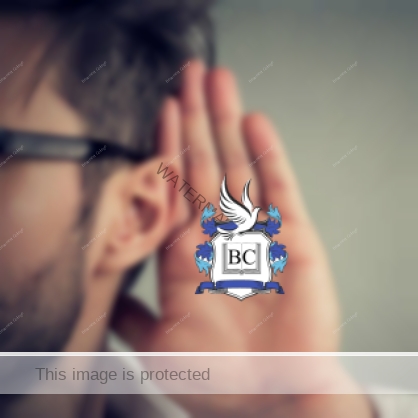
BRAND MANAGEMENT
Brand management uses marketing techniques to increase the perceived value of a product line or brand over time. Effective brand management enables the price of products to go up (because we're adding customer value), and builds loyal customers through positive brand associations and images or a strong awareness of the brand.
We will look at branding in greater depth in later subjects.
Consumer Behaviour
All marketing involves consumer behaviour (MKTG1030). Consumer behaviour looks at how and why people select, use and dispose of products, and how organisations influence these behaviours.
Why is this important?
Understanding this terminology can help you no matter if you're a job seeker, a consultant, manager or business owner.
Job
Seekers
Business
Owners
Consultants
& Digital Nomads
Managers
Great start! We now know what marketing is
and the main areas involved.
LET'S NOW LOOK AT 4 important CONCEPTS
THAT underpin ALL MARKETING
LET'S NOW LOOK AT 4 CONCEPTS THAT FORM THE FOUNDATION OF ALL MARKETING



1.4
NEEDS, WANTS
& DEMAND
All people need & want different things
1.5
GOODS &
SERVICES
Needs & wants are satisfied by products
1.6
THE PRODUCT
LIFE-CYCLE
All products go through a life-cycle
1.7
THE
MARKETING MIX
To manage the life-cycle we use the marketing mix
Needs, Wants & Demand
Goods &
Services
The Product
Lifecycle
The
Marketing Mix
1.4 Needs, wants & Demand
WORKBOOK
PageS 7-9
There are three important concepts in marketing: needs, wants, and demands. Understanding these three simple concepts can change the entire direction of your company, and help you develop the most suitable products, and know which markets to expand into to drive the growth of your business.
- Needs are things that meet our most basic requirements (we need them).
- Wants are needs specific to a our own specific preferences.
- Demand is created when customers are willing to pay for their needs & wants.
There are three important concepts in marketing: needs, wants, and demands. Understanding these three simple concepts can change the entire direction of your company, and help you develop the most suitable products, and know which markets to expand into to drive the growth of your business.
CONSUMER NEEDS
THINGS EVERYONE NEED REGARDLESS OF AGE, CULTURE OR INCOME.
Needs can be things like food and water, shelter or safety. Most people also need things such as recreation, intimacy and a sense of community and belonging.
These are the most fundamental requirements of all people.
CONSUMER WANTS
A WANT IS A NEED DIRECTED TOWARD A PARTICULAR PRODUCT
Stereotypes may include an Australian wanting steak for breakfast, and a Japanese wanting noodles.
Of course these are just stereotype to illustrate the difference between needs & wants, but as we’ll see later, consumer preferences & behaviours are far more complex.
CONSUMER DEMAND
DEMAND IS WHEN PEOPLE CAN AFFORD A WANT
This is where the phrase ‘MARKET DEMAND’ comes from. Demand is the total number of people (in a particular area) who want a product and can afford it.
For example, in London there is high demand for luxury cars, but less demand in for luxury cars in rural areas.

CONSUMER NEEDS
THINGS ALL PEOPLE MUST HAVE
Needs can be things like food and water, shelter or safety. Most people also need things such as recreation, intimacy and a sense of community and belonging. These are the most fundamental requirements of all people.

CONSUMER WANTS
NEEDS DIRECTED TOWARDS A PARTICULAR OBJECT
Stereotypes may include an Australian wanting steak for breakfast, and a Japanese wanting noodles. Of course these are just stereotype to illustrate the difference between needs & wants, but as we'll see later, consumer preferences & behaviours are far more complex.

CONSUMER DEMAND
DEMAND IS WHEN PEOPLE CAN AFFORD A WANT
This is where the phrase market demand comes from. Demand is the total number of people (in a particular area) who want a product and can afford it.
For example, in large cities there may be high demand for luxury sports cars, but low demand in rural areas.
Notice how this example ties in with the market orientation, and the functions of marketing discussed earlier.
WHY IS THIS USEFUL?
BECAUSE IT CAN CHANGE
THE WHOLE
DIRECTION OF OUR COMPANY
For example, we may think the consumer needs for going to our gym are to exercise. But with research we find for many members their most important need is social connection and security, not exercise.
As we research more we find their wants are not the latest equipment, but a safe environment to workout and meet people, and that there is considerable demand for this.
By looking at needs, wants & demand
We now know improving social activities in a safe environment are the products we need to invest in, and not, as we first thought, on expensive equipment.
WHY IS THIS USEFUL?
BECAUSE IT CAN CHANGE THE WHOLE DIRECTION OF OUR COMPANY
WE MAY THINK CONSUMER NEEDS for going to our gym are to exercise. But with research we find for many members their primary NEED is social connection and security, not exercise.
AS WE RESEARCH MORE, we find their WANTS are not the latest equipment, but a safe environment to workout and meet people, and that there is considerable DEMAND for this.
WITH NEEDS, WANTS & DEMAND
We now know improving social activities in a safe environment is where to invest our resources and not, as we first thought, on expensive equipment.
1.5 PRODUCTS
IN SIMPLE TERMS THE MAIN TYPES OF PRODUCTS ARE PHYSICAL GOODS, SERVICES & VIRTUAL PRODUCTS.
The term “product” refers to anything a company offers to meet people’s needs and wants. This includes physical goods, such as electronics or clothing. Products also include services, which involve performing tasks or providing expertise like consulting or healthcare. Additionally, products can be virtual, such as software or e-books, which are delivered electronically (see Saap below).
1. Physical Goods
2. Services
3. Virtual Products
SERVICE AS A PRODUCT (Saap)
Unlike traditional services that are customised, SaaP offers standardised services that are available on-demand and scalable. Examples of SaaP include platforms like Uber, Fiverr, and Airbnb. We will disucss Saap more in later subjects.
But almost anything can be a MARKETABLE product, even you!
- GOODS are physical products that can be bought and sold, such as cars, clothes, food, and electronics. They are tangible items that consumers can hold and use.
- SERVICES are intangible products that are performed. Examples include transportation, cleaning, healthcare, education, and entertainment. Unlike goods, services cannot be held or touched but are instead provided by people or systems.
- VIRTUAL (digital) products don't have a physical form. Instead, they exist only in digital form. This makes them easy to distribute and are often less expensive than physical goods.
SERVICE AS A PRODUCT (SaaP)
SaaP refers to a service that is packaged and sold like a product. It is hosted and accessed by users via a web or app browsers.
Unlike traditional services that are customised, SaaP offers standardised services that are available on-demand and scalable. Examples of SaaP include platforms like Uber, Fiverr, and Airbnb. We will disucss Saap more in later subjects.
But as we see below, almost anything can be a product, even you!
Physical Goods
Phones, Cars, Clothes, Computers, Pets, Food, Bags, Houses, Furniture...
Places
Eiffel Tower, Pyramids, Cities, Grand Canyon, Disneyland, Great Barrier Reef...
Ideas
Research, Data, Philosophies, Inventions, Models, Theories, (some) Religions...
SERVICES
Education, Hairdressers, Restaurants, Doctors, Police, Airlines, Massage...
EVENTS
World Cup Soccer, Olympics, Expos, World Series Baseball, Conferences, Fairs, Festivals...
PEOPLE
Celebrities, Politicians, Athletes, Singers, Movie Stars, Academics, EVEN YOU...
Goods
Phones, Cars, Clothes, Computers, Pets, Food, Bags, Houses...
SERVICES
Education, Hairdressers, Restaurants, Doctors, Police, Massage...
Ideas
Research, Data, Inventions, Models, Theories, (some) Religions...
PLACES
Eiffel Tower, Pyramids, Cities, Grand Canyon, Disneyland, Great Barrier Reef...
EVENTS
World Cup Soccer, Olympics, Expos, Conferences, Fairs, Festivals...
PEOPLE
Celebrities, Politicians, Athletes, Singers, Movie Stars, Academics, You...
GOODS & SERVICES
let's first look at Goods & Services
WORKBOOK
Page 8 (Exercise 1D)
In marketing, “consumer goods” are products purchased by individuals for personal use.
Consumer goods include convenience goods (like groceries), shopping goods (such as electronics), specialty goods (luxury items), and unsought goods (funeral services). Each category varies in purchase frequency and effort involved.
These consumer goods categories vary on how frequently they’re bought and the level of consumer involvement, with each requiring different strategies to meet different consumer needs and preferences.
We also call them final goods and they are often classified as durable or non durable goods.
DURABLE
Last 3 years or longer. Like TVs, cars, white goods.
NONDURABLE
Typically last less than 3 years. Like food, clothing, drinks
THERE ARE 4 MAIN TYPES of consumer goods and each has different marketing considerations. The 4 types are:
- 4 TYPES OF CONSUMER GOODS
- Convenience Goods
- Shopping Goods
- Specialty Goods
- Unsought Goods
DURABLE
Durable goods last 3 years or longer (we hope). Like TVs, cars, white goods.
NONDURABLE
Nondurable goods typically last less than 3 years. Like food, clothing, drinks
CONVENIENCE GOODS
PRODUCTS WE BUY ON A REGULAR BASIS
These are regular products we use most days such as milk and sugar. Consumers don’t usually spend a lot of time investigating consumer goods (unless they special needs), they may brand switch, be enticed with price discounts, and try new brands.
FOCUS: PRICE & CONVENIENCE
SHOPPING GOODS
GOODS NOT BOUGHT AS OFTEN AS CONVENIENCE GOODS.
Shopping goods can include things like books, clothing and home furnishings. In this category consumers typically make more of a shopping effort, comparing quality and price and a greater degree of involvement (we cover involvement in MKTG1030).
FOCUS: QUALITY & AFFORDABILITY
SPECIALTY GOODS
USUALLY MORE EXPENSIVE & WITH A STRONG BRAND REPUTATION.
Examples of specialty goods include Apple iPhones, and Louis Vuitton bags. While consumers will often go to more effort to purchase these goods, there is less comparison on factors such as price and convenience.
FOCUS: QUALITY & REPUTATION
UNSOUGHT GOODS
PRODUCTS WE DON’T WANT TO BUY BUT SOMETIMES MUST BUY.
They may include things like funeral services and insurance. They often rely on heavy advertising, promotions, and personal selling. Typically lower loyalty than with specialty goods, and consumers seek service and benefits (e.g. the benefits of car insurance).
FOCUS: SERVICE & PERSONAL SELLING
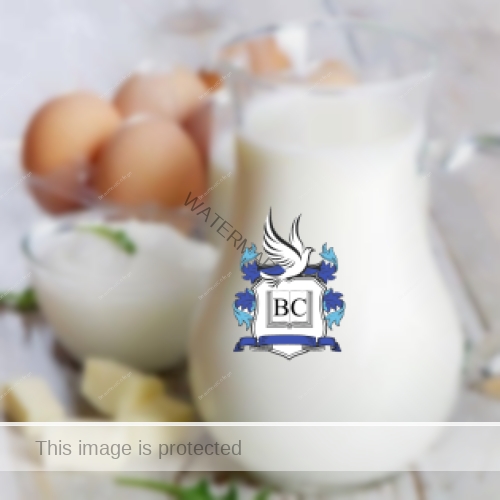
CONVENIENCE GOODS
PRODUCTS WE BUY ON A REGULAR BASIS
These are regular products we use most days such as milk and sugar. Consumers don't usually spend a lot of time investigating consumer goods (unless they special needs), they may brand switch, be enticed with price discounts, and try new brands.
FOCUS: PRICE & CONVENIENCE
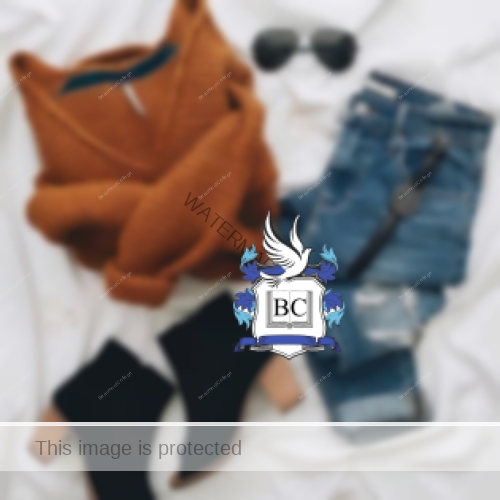
SHOPPING GOODS
GOODS NOT BOUGHT AS OFTEN AS CONVENIENCE GOODS
Shopping goods can include things like books, clothing and home furnishings. In this category consumers typically make more of a shopping effort, comparing quality and price and a greater degree of involvement (we cover involvement in MKTG1030).
FOCUS: QUALITY & AFFORDABILITY

SPECIALTY GOODS
USUALLY MORE EXPENSIVE & WITH A STRONG BRAND REPUTATION
Examples of specialty goods include Apple iPhones, Louis Vuitton bags, and sports cars. While consumers will often go to more effort to purchase these goods, there is less comparison on factors such as price and convenience.
FOCUS: QUALITY & REPUTATION

UNSOUGHT GOODS
PRODUCTS WE DON'T WANT BUT SOMETIMES MUST BUY
These include things like funeral services and insurance. They often rely on heavy advertising and personal selling. Typically lower loyalty than specialty goods, and consumers seek high service and clear benefits.
FOCUS: SERVICE & PERSONAL SELLING
HOW ABOUT YOUR
COMPANY OF INTEREST?
For your company of interest (if they sell physical goods) what kind of consumer goods do they offer? What would their focus be (convenience, affordability, quality, reputation, high service)?
Do you think they're doing a good job or could it be better in any areas?
SERVICES

UNLIKE GOODS
SERVICES ARE INTANGIBLE
<span (Intangible means something can't be touched)
Services make up a vast portion of the global economy, and are an important part of all businesses - even those that just produce physical or virtual goods. Service based businesses, such as banking, education, medical treatment, and transportation make up the majority of the economies of many nations.
COMBINING GOODS & SERVICES
By combining goods & services we create an overall consumer experience. For example, buying an airline ticket online (service), relaxing in the lounge (service), eating in-flight meals (goods), watching a movie (service), and buying duty free products (goods) all combine to create the overall consumer experience.
COMBINING GOODS & SERVICES
By combining goods & services we create an overall consumer experience. For example, buying an airline ticket online (service), relaxing in the lounge (service), eating in-flight meals (goods), watching a movie (service), and buying duty free products (goods) all combine to create the overall consumer experience.
Services are different from physical products in 6 ways
Services DIFFER from
physical products in 6 ways

Intangibility
We can't touch or experience services until after they're bought.

NO OWNERSHIP
We don't own anything tangible after buying a service.

Inseparability
Services are (often) delivered and used at the same time.

VARIABILITY
Unlike goods, services can change with every encounter.

PERISHABILITY
We can't store services for later sale or use like physical products.

PARTICIPATION
Unlike goods, consumers are active participants in services.
Intangibility
We can't see or touch services before purchase.
Ownership
We don't own anything tangible after a service.
Inseparability
Services are produced and used at the same time.
Variability
Services can change with every encounter.
Perishability
Services cannot be stored for later sale or use.
Participation
Customers participant in service delivery.
- We look managing these issues in MKTG1020 Services Marketing.
1.6 product life-cycle
WORKBOOK
Page 9 (Exercise 1E)
NO MATTER IF YOU sell A PHYSICAL GOOD, Virtual product, a SERVICE, CELEBRITY, EVENT, OR IDEA, ALL GO THROUGH A LIFE-CYCLE.
Products that have been around for a while eventually become less popular and need to be upgraded, or replaced by new products – this process of change is the Product Life Cycle (PLC).
Products start off with market introduction, and as they become more popular they move through the growth stage before reaching maturity and eventual decline. For each stage of the life cycle we need to use different marketing strategies.
FIGURE 1
The Product Life Cycle Stages
(You will learn product extensions in the next lesson)
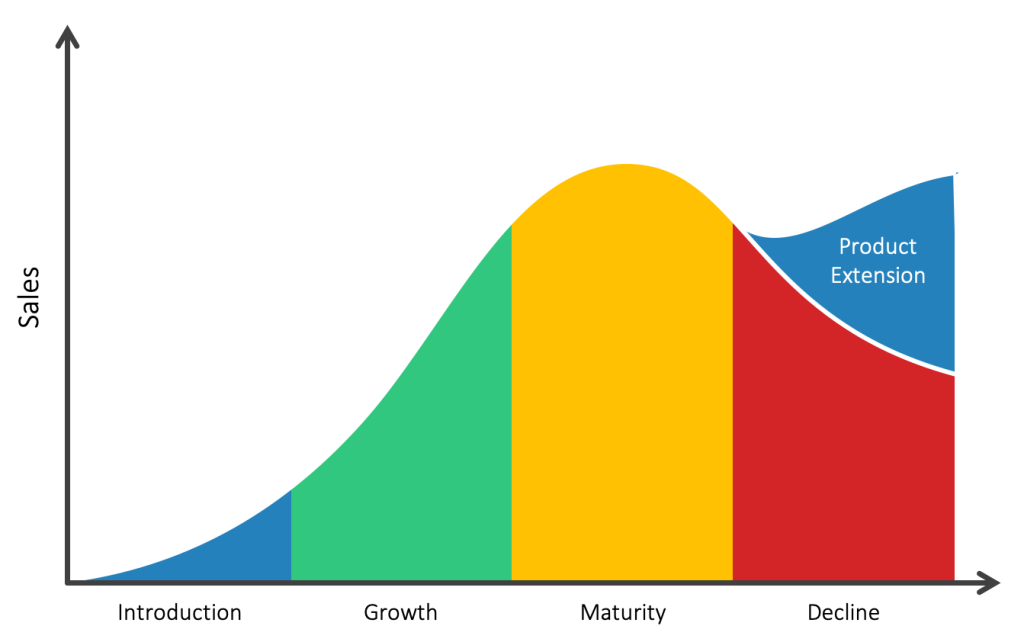
EXAMPLE
iPod annual sales by year (000's)
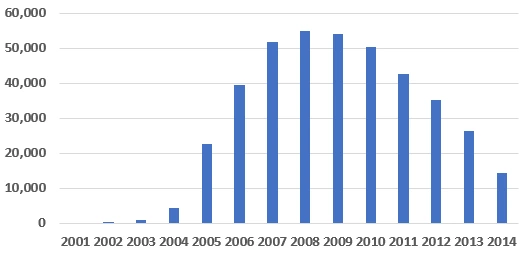
Products that have been around for a while eventually become less popular and need to be upgraded, or replaced by new products – this process of change is the Product Life Cycle (PLC).
Products start off with market introduction, and as they become more popular they move through the growth stage before reaching maturity and eventual decline. For each stage of the life cycle we need to use different marketing strategies.
THE PRODUCT LIFECYCLE
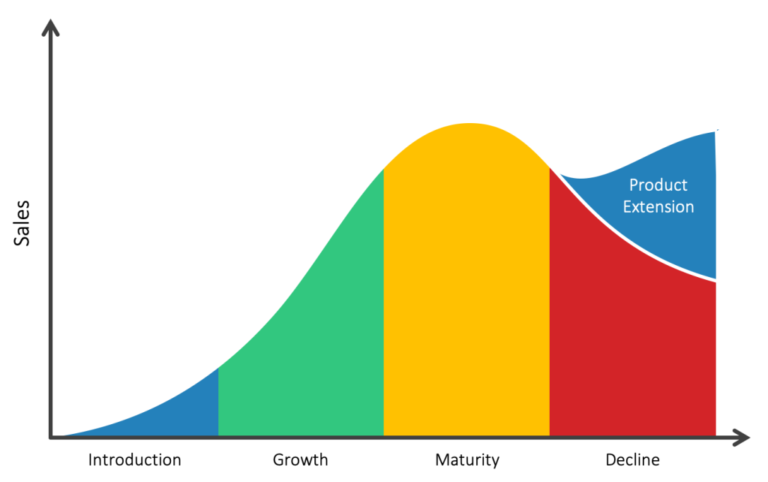
PRODUCT LIFE CYCLE EXAMPLE
iPod annual sales by year (000’s)

DEVELOPMENT & Introduction Stage
1) DEVELOPMENT
Here we are losing money because because of large research and development (R&D) costs but no sales yet (more on this in the next lesson).
2) INTRODUCTION
When a new product enters the market (product launch) it requires a lot of investment (money) and usually there are not many buyers / customers. Either people are unaware of the product, or they wait to see if it becomes popular. Occasionally a new product will create a buzz and sales take off immediately, but this is rare.
Growth Stage
STRONG SALES & PROFITS
Sales start to increase and we can benefit from economies of scale in production, and increased profit margins. As sale increase we increase our promotions to capture greater market share (more customers).
HOWEVER, as sales and demand increase we start to face greater competition as other companies want to benefit from this growing market.
Maturity Stage
PROTECT OUR MARKET SHARE
The market is now crowded with competitors and new sales slow down. We now have to protect our market share and not lose customers. We do reminder advertising, and strong sales promotions (see MKTG1040). We can also start to think about product innovations to begin the PLC from the start (see next point).
Decline Stage
TIME TO INNOVATE
At the end of the life-cycle profits start to fall and markets are saturated (too many competitors). Here companies may either improve the product and start the PLC cycle again, or stop production of the product and move on to newer emerging products (we cover this in the BCG matrix in the next lesson).
IN THE DECLINE STAGE COMPANIES CAN:
- Make small upgrades / changes (called incremental innovation).
- Make big changes to the product (called radical innovation).
- Or discontinue production all together.
Development & Introduction
1) NEW PRODUCT DEVELOPMENT
Here we are losing money because because of large research and development (R&D) costs but no sales yet (more on this in the next lesson).
2) WHEN A NEW PRODUCT ENTERS A MARKET (product launch) it requires at lot of investment (money). There are usually not many buyers/ customers. Either people are unaware of the product, or they wait to see if it becomes popular. Occasionally a new product will create a buzz and sales take off immediately, but this is rare.
Growth stage
STRONG SALES & PROFITS
Sales start to increase and we can benefit from economies of scale in production, and increased profit margins. As sale increase we increase our promotions to capture greater market share (more customers).
HOWEVER, as sales and demand increase we start to face greater competition as other companies want to benefit from this growing market.
Maturity Stage
PROTECT OUR MARKET SHARE
The market is now crowded with competitors and new sales slow down. We now have to protect our market share and not lose customers. We do reminder advertising, and strong sales promotions (see MKTG1040).
We can also start to think about product innovations to begin the PLC from the start (see next point).
Decline Stage
TIME TO INNOVATE
At the end of the life-cycle profits start to fall and markets are saturated (too many competitors). Here companies may either improve the product and start the PLC cycle again, or stop production of the product and move on to newer emerging products (we cover this in the BCG matrix in the next lesson).
IN THE DECLINE STAGE COMPANIES CAN:
- Make small upgrades / changes (called incremental innovation).
- Make big changes to the product (called radical innovation).
- Or discontinue production all together.
SIMPLE VIDEO
Watch this short overview from Professor Johnson for a brief summary of the PLC.
2 Minutes
ADVANCED VIDEO
Watch this video from Tutor2U to see more on the PLC and how it applies in business.
Note: We will cover all the concepts they discuss in this advanced video in upcoming lessons.
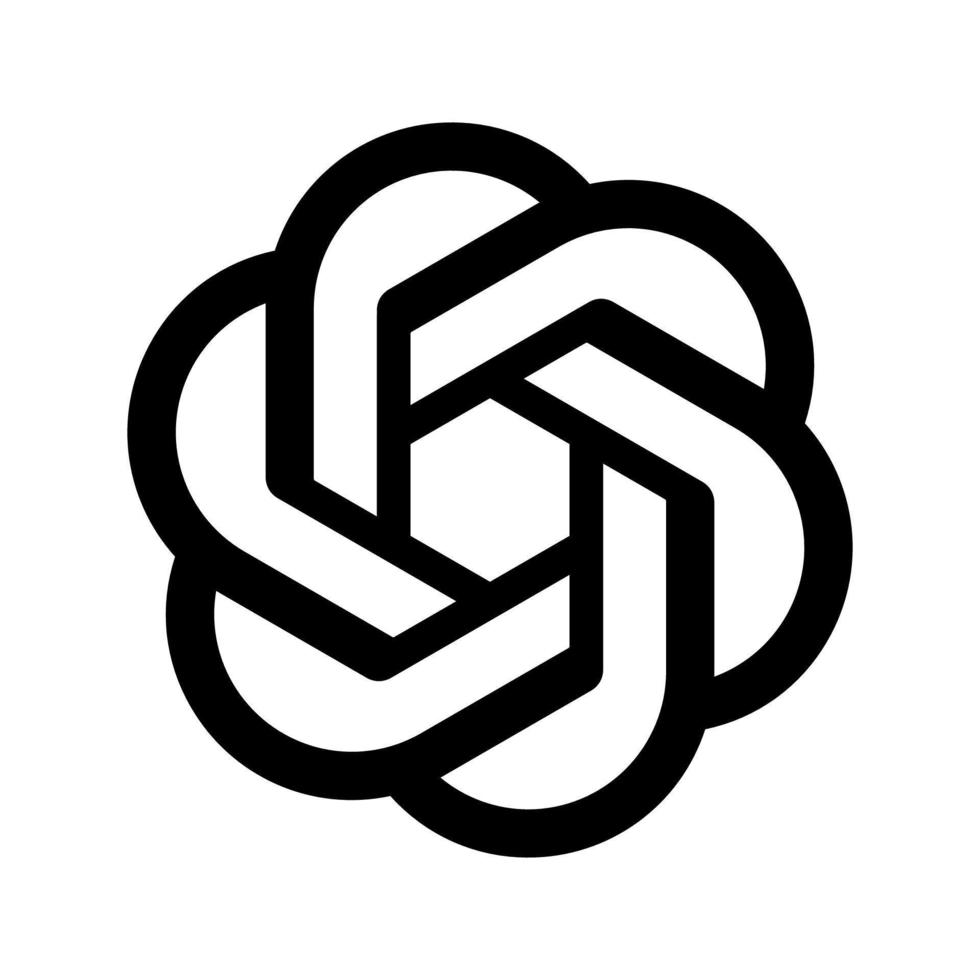
USE CHATGTP
Ask CHATGPT to write a simple report for a new product your company can introduce.
Here's an example prompt (just change the product to what you want):
"Can you write a 150 word product lifecycle report for a wine bar that wants to introduce a new wine at the introduction stage."
1.7 THE MARKETING MIX
WORKBOOK
READ Page 10
SO how do we manage so many ORIENTATIONS & concepts?
To get just one thing wrong can be disastrous. After months of preparation you may launch and find the competition is just too strong, or worse, find that nobody wants your product! To help ensure success we use the MARKETING MIX to guide every stage of our business development. The marketing mix is made up of the following 7Ps:
To get just one thing wrong can be disastrous. After months of preparation you may launch and find the competition is just too strong, or worse, find that nobody wants your product!
To help ensure success we use the MARKETING MIX to guide every stage of our business development. The marketing mix is made up of the following 7Ps:
01
PRODUCT
02
PROMOTION
03
PLACE
04
PRICE
05
PEOPLE
06
PROCESS
07
PHYSICAL EVIDENCE
OVERVIEW OF THE MARKETING MIX (7Ps)
Watch the video for an overview of the 7Ps of the Marketing Mix.
MARKETING MIX OVERVIEW
2.40 mins

PRODUCT
THE GOODS & SERVICES WE OFFER
This sounds simple, but as we'll see in the next lesson there is a lot we need to consider with our products.
These include the features, advantages and benefits that your product provides, how these offer meaningful differentiation, and meet consumers' needs wants and demands better than the competition in highly competitive markets.
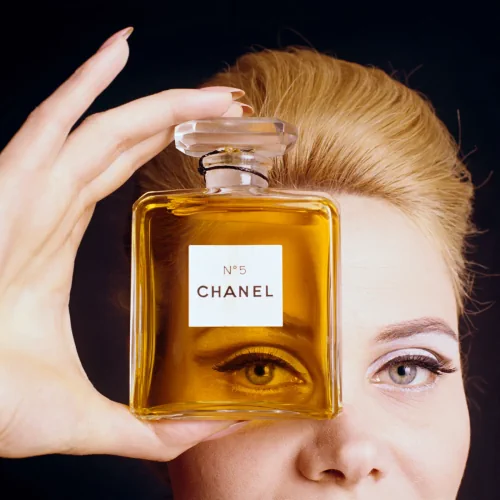
PRICE
ARGUABLY THE HARDEST PART OF MARKETING
Price refers to your pricing strategies & tactics and how they influence buying behavior.
You should identify how much your customers are prepared to pay, your positioning, profit margins, costs and payment methods.
This is one of the hardest aspects of marketing as you cannot keep changing prices to see what works or doesn't work.

PLACE
PRODUCING & GETTING OUR PRODUCTS TO THE CONSUMER
Place refers to all the processes needed to get our products from the producer to the end user. This could be through a combination of intermediaries such as distributors, wholesalers & retailers.
Placement focuses on reaching the right consumers, at the right time, with the right amount of products. Failure at any of these stages can be expensive, as well as lose sales.
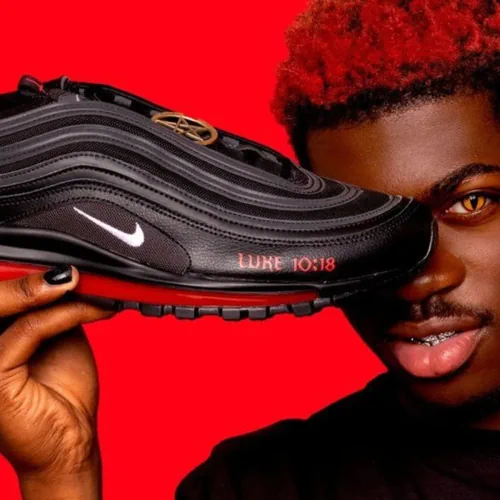
PROMOTION
INFORMING, ENGAGING CONSUMERS & DRIVING AWARENESS AND SALES
Promotional activities are what drive your sales and growth and includes advertising, publicity, direct marketing, driving engagement and much more.
These activities work in harmony and, combined, are called Integrated Marketing Communications (IMC).
The benefits of promotions include increasing sales, brand building, building client databases, and consumer engagement to name just a few.

PEOPLE
THE PEOPLE WHO REPRESENT YOUR COMPANY
People refer to the staff who work for your organization, or associated with your organization.
These people often become the face of your brand and, as such, are critical to how your brand is perceived by the market.
Organizations must develop their competitive advantage by recruiting the right people, training and retaining good staff.
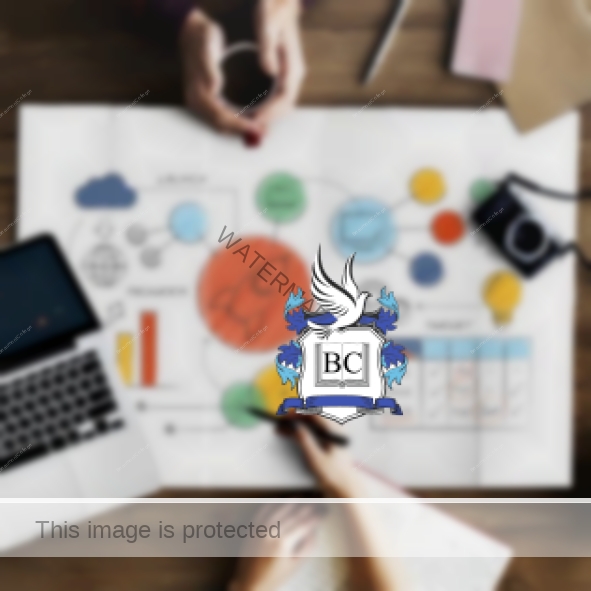
PROCESS
EVERY ASPECT OF HOW THE CONSUMER INTERACTS WITH YOUR COMPANY
DIRECT PROCESSES occur when the consumer interacts with your company such as speaking with a sales person, emails, and any other interaction.
INDIRECT PROCESSES support the service before, during and after it has been consumed. These can include activities such as order tracking, and automated emails.
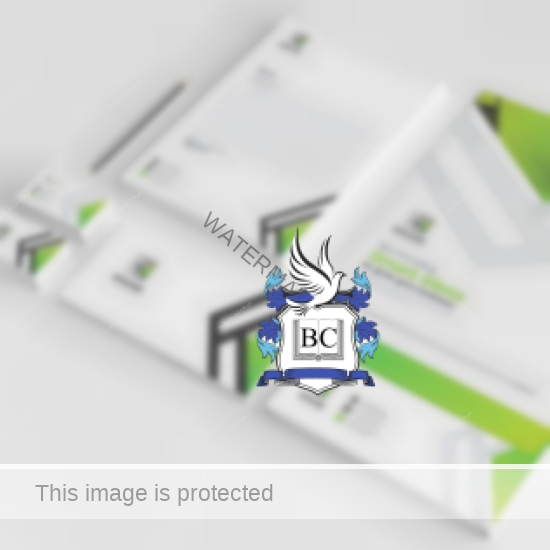
PHYSICAL EVIDENCE
EVERYTHING YOUR CONSUMERS SEE, HEAR, SMELL & FEEL
Physical evidence refers to everything your customers experience when interacting with your business.
This includes websites, packaging, business cards, staff uniforms, office or shop design, lighting and landscaping to name just a few examples.
These factors all combine to communicate who you are and the service you provide.
PRODUCT
THE GOODS & SERVICES OUT INTO THE MARKET PLACE
This sounds simple, but as we’ll see in the next lesson there is a lot we need to consider with our products.
These include the features, advantages and benefits that your product provides, how these offer meaningful differentiation, and meet consumers’ needs wants and demands better than the competition in highly competitive markets.
PRICE
ARGUABLY THE HARDEST PART OF MARKETING
Price refers to your pricing strategies & tactics and how they influence buying behaviour. You should identify how much your customers are prepared to pay, your positioning, profit margins, costs and payment methods.
This is one of the hardest parts of marketing as you cannot keep changing prices to see what works or doesn’t work.
PLACE
PRODUCING & GETTING OUR PRODUCTS TO THE CONSUMER
Place refers to all the processes needed to get our products from the producer to the end user. This could be through a combination of intermediaries such as distributors, wholesalers & retailers.
Placement focuses on reaching the right consumers, at the right time, with the right amount of products. Failure at any of these stages can be expensive, as well as lose sales.
PROMOTION
INFORMING, ENGAGING CONSUMERS & DRIVING AWARENESS AND SALES
Promotional activities are what drive your sales and growth and includes advertising, publicity, direct marketing, driving engagement and much more.
These activities when combined are called Integrated Marketing Communications (IMC). The benefits of promotions include increasing sales, brand building, building client databases, and consumer engagement to name just a few.
PEOPLE
THE PEOPLE WHO REPRESENT YOUR COMPANY
People refer to the staff who work for your organization, or associated with your organization. These people often become the face of your brand and, as such, are critical to how your brand is perceived by the market.
Organizations must develop their competitive advantage by recruiting the right people, training and retaining good staff.
PROCESS
EVERY ASPECT OF HOW THE CONSUMER INTERACTS WITH YOUR COMPANY
DIRECT PROCESSES occur when the consumer interacts with your company such as speaking with a sales person, emails, and any other interaction.
INDIRECT PROCESSES support the service before, during and after it has been consumed. These can include activities such as order tracking, and automated emails.
PHYISICAL EVIDENCE
EVERYTHING YOUR CONSUMERS SEE, HEAR, SMELL & FEEL
Physical evidence refers to everything your customers experience when interacting with your business. This includes websites, packaging, business cards, staff uniforms, office or shop design, lighting and landscaping to name just a few examples.
These factors all combine to communicate who you are and the service you provide.
LET'S RECAP
WHAT YOU'VE LEARNED

This is hard to remember if you haven't done your workbook
Click To Download
Your Workbook
- 4 main organisational orientations (do you remember them?)
- The marketing orientation puts the consumer as its focus.
- 5 main function of marketing.
- Products satisfy needs & wants (almost everything is a product).
- 4 main types of consumer goods.
- Services differ from physical goods in 6 ways.
- All products go through the product life-cycle (PLC).
- The 7Ps of the marketing mix help us manage business growth.

Let's Help Dave
Your first client
As we go through each lesson we'll apply what we learn to our client (Dave).
Dave recently bought a wine bar and wants to grow his business.
It's your task to apply what you learn to help Dave achieve his goals.
1.1 Organisational Orientations

Hi, I'm Dave. Thanks for helping out.
So here's the problem. I've been running my new wine bar for 6 months. I offer great wines, they're expensive, and the best in town. But unless I run special discounts and offers I only just make enough money to make it worthwhile.
While I'm making OK money, I'm working too hard and can't grow. Can you help me take my business to the next level?
With his expensive wines and occasional discounts it sounds like Dave has been adopting a mix of the product and sales orientations.
While having great products and sales are important, the problem is Dave has no customer focus. He may like only the best wines, but is that what his customers want?
To find out we need to adopt a market orientation and start speaking with our customers to understand their needs.
1.2 Marketing Functions
OK Dave, it's time to learn about your customers
First Dave needs to understand his customers and why they select his wine bar (or why they don't). This requires the first function of marketing: customer research.
Understanding this will help guide Dave on how to provide greater customer satisfaction, reduce lost sales, decide the best products to sell, and how to maximise his profits (so hopefully he can work less for more money).
It's only after understanding our customers that we can develop our inbound, outbound, and social marketing strategies (this comes in future lessons).
For now just remember that understanding our customers is the first and most important step. We will look at how to investigate consumer behaviour in MKTG1030
1.4 Needs, Wants & Demand
Let's find out what Dave's customers need, want and if there's demand for it.
When investigating his customers Dave needs to get clear on his customers needs, wants and the market demand. Dave tell us he is selling only the best & expensive wines. But is this what Dave's customers want?
If our research shows that exclusive wine IS what Dave's customers want then we will need to look at the remaining 6Ps of the marketing mix to see what the problem is (we cover this in the upcoming lessons).
But what if our research shows that this is NOT what Dave's customers want, or maybe they can't afford it (no demand).
1) Then Dave could research what prices his customers are more comfortable with (remember the problem that Apple had with their iPhones).
2) Maybe our research also finds Dave's customers want an peaceful place to relax after work: the wine is less important, what customers want is a relaxed atmosphere on week days.
1.5 Products (Goods & Services)
OK, let’s assume our research found Dave’s customers want a wider range of wines and price points (cheaper wines as well), and also an intimate location to relax after work on weekdays.
By combining goods and services we can improve the overall customer experience.
- So for Dave we might suggest that he includes some cheaper house wines (but not too cheap!) to compliment his expensive specialty wine list (price), and the ability to order via an app (process) so customers are not disturbed if they want privacy.
- We can also suggest Dave considers more intimate ambiance during week day evenings (physical evidence covered in MKTG1020 Servives Management).
1.6 The product life-cycle

We will classify Dave's new wine bar as being in the introduction stage of the life-cycle as it's only been open a few months.
Because of this we need to advise Dave that building up his business may take some time and money before he sees results.
But that's OK, we'll learn in future lessons how to make significant growth even on small budgets.
1.7 The marketing mix

We can advise Dave that there is a great deal we can do to help him meet his goals using the 7Ps of the marketing mix. But for now, we will just look at his product (next lesson).
Based on the feedback from our customer research we recommend that Dave introduces a greater range of wines at more affordable prices (see pricing lesson 6).
To reduce his risk, and to continue his market research, we suggest he does this gradually with a “house wine of the month”.
- This will offer a more affordable alternative to price sensitive customers.
- And allow him to test which wines are popular before committing to larger orders from his supplier. Once Dave knows which are the most popular affordable house wines he can permanently add them to his menu.
We will cover all the other Ps in the marketing mix in upcoming lessons.

Let's help Dave
your first client
As we work our way through each lesson we'll apply what we learn to our client (Dave).
Dave bought a wine bar a year ago and is wanting to grow his business.
As his business consultant it's your task to apply what you've learned to help Dave achieve his goals.
1.1 Organisational Orientations
Where to begin?
It's been a good first few months for Dave and he's managed to pay all his bills and has a few regular customers.
Dave serves only the best wine, runs a few promotions on holidays, and has a good relationship with a wine supplier.
But he's working long hours and not making as much money as he thought.
It sounds like Dave needs to change to a market orientation.
1.2 Marketing Functions
Putting Your customer first.
The first thing Dave needs to do is understand his customers, and why they select his wine bar (or why they don't). This requires the first function of marketing: customer research.
Understanding this will help guide Dave on how to provide greater customer satisfaction, reduce lost sales, and decide what are the best products to sell.
Note: It's only after understanding our customers that we can develop our inbound, outbound, and social marketing strategies (this comes in future lessons).
For now just remember that understanding our customers is the first and most important step. We will look at how to investigate consumer behaviour in more depth in MKTG1030
1.4 Needs, Wants & Demand
Understanding Your customers.
When investigating his customers (last tab) Dave needs to get clear on his customers needs, wants and demand.
It sounds like Dave is selling only the best wines that are expensive and very exclusive. But is this what Dave's customers actually need and want?
If our research shows that exclusive wine IS what Dave's customers want then we will need to look at the remaining 6Ps of the marketing mix to see what the problem is.
But what if our research shows that this is NOT what Dave's customers want, or maybe they can't afford it (no demand). If so, then Dave could research what prices his customers are more comfortable with (remember the problem that Apple had with their iPhones).
Maybe our research reveals that what Dave's customers also want is an intimate location to relax after work. In this case the wine is less important, what customers need and want is a more relaxed atmosphere on week days (the physical evidence).
1.5 Products (Goods & Services)
Goods & Services satisfiy Customer Needs & wants
Our research found Dave's customers want a wider range of wines, as well as an intimate location to relax after work on weekdays.
By combining goods and services we can improve the overall customer experience. So for Dave we might suggest that he includes some cheaper house wines (but not too cheap!) to compliment his expensive specialty wine list (price), and the ability to order via an app (process) so customers are not disturbed if they want privacy.
We can also suggest Dave considers more intimate ambiance during week day evenings (physical evidence).
We cover service settings and the physical evidence in detail in MKTG1020 Services Management.
1.6 The product life-cycle
We will classify Dave’s new wine bar as being in the introduction stage of the life-cycle as it has only been open a few months.
Because of this we need to advise Dave that building up his business may take some time, and money before he sees results.
But that’s OK, as we will learn in future lessons and subjects we can make significant growth even for small budgets.
1.7 The marketing mix
We can advise Dave that there is a great deal we can do to help him meet his goals using the 7Ps of the marketing mix. But for now, we will just look at his product (next lesson).
Based on the feedback from our customer research we recommend that Dave introduces a greater range of wines at more affordable prices (see pricing lesson 6).
To reduce his risk, and to continue his market research, we suggest he does this gradually with a “house wine of the month”.
- This will offer a more affordable alternative to price sensitive customers.
- And allow him to trial which wines are popular before committing to larger orders from his supplier. Once Dave knows which are the most popular affordable house wines he can add them permanently to his menu.
We will cover all the other Ps in the marketing mix in upcoming lessons.
Remember
1. These are just simple examples of how to apply the concepts, but every situation and business will be different.
2. The same process and creative thinking applies no matter if you sell physical goods, virtual products, or a service.
3. These marketing strategies will become more sophisticated as you learn more.
Remember
- These are just examples of how to apply the concepts, but every situation and business will be different.
- The same process and creative thinking applies no matter if you sell physical goods, virtual products, or a service.
- These marketing strategies will become more sophisticated as you learn more.
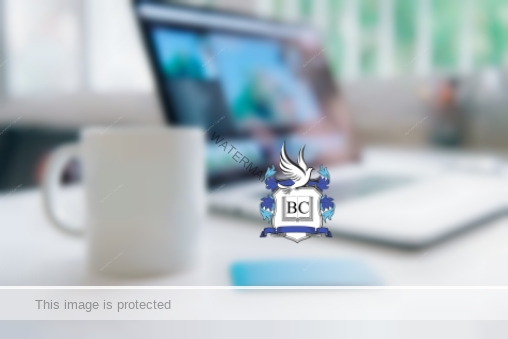
LESSON 1 COMPLETE
IN THIS LESSON: We looked at some of the most fundamental concepts in marketing that lay the foundation for deeper strategy, analysis, and application.
NEXT LESSON: We will build on this foundation and look further at tangible products (called 'Goods') and important characteristics we need to consider when developing and managing our product range.
TO PROGRESS CLICK
MARK COMPLETE
NEXT LESSON

